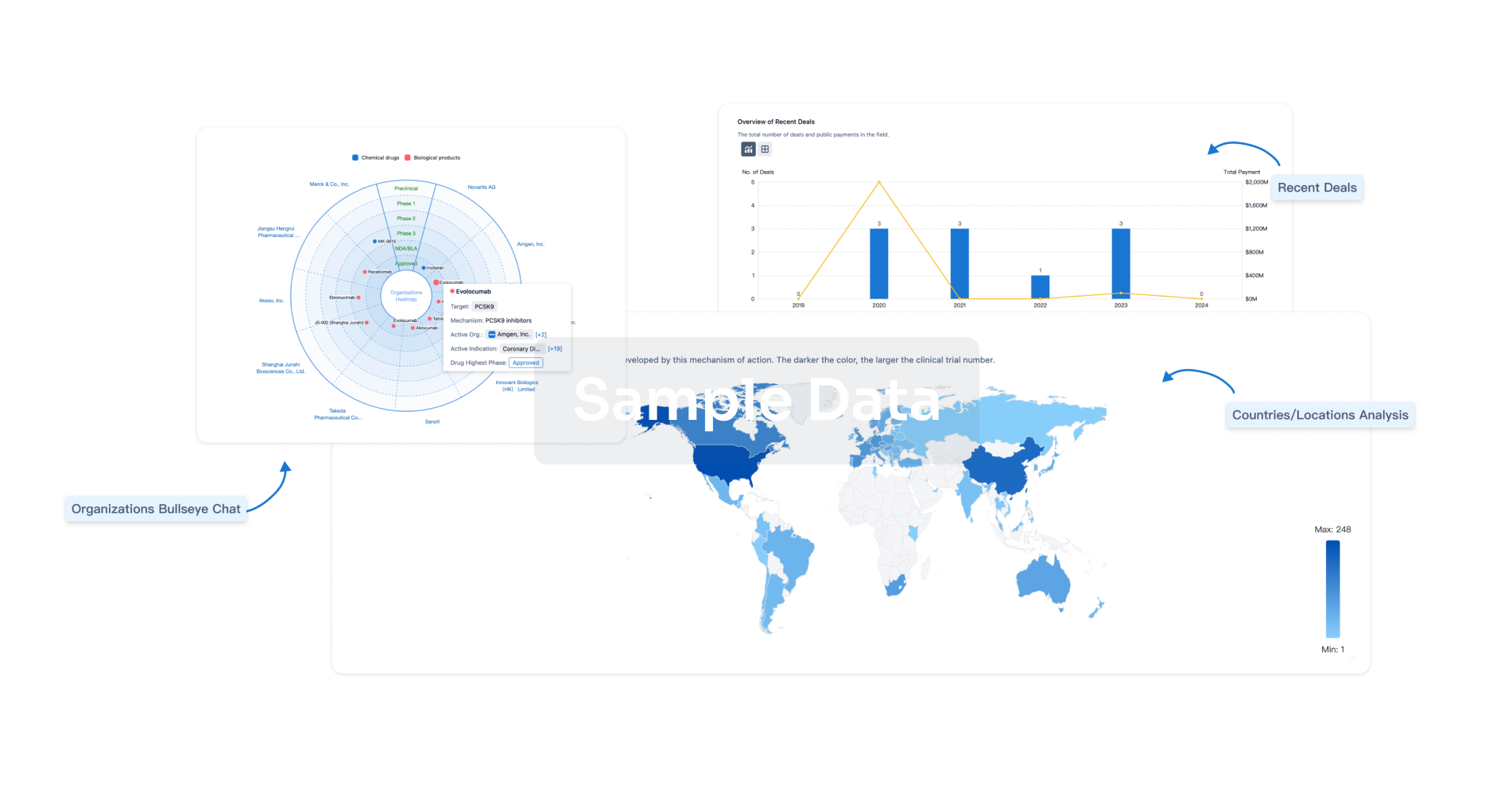Request Demo
Last update 08 May 2025
USP46
Last update 08 May 2025
Basic Info
Synonyms Deubiquitinating enzyme 46, FLJ12552, Ubiquitin carboxyl-terminal hydrolase 46 + [4] |
Introduction Deubiquitinating enzyme that plays a role in behavior, possibly by regulating GABA action. May act by mediating the deubiquitination of GAD1/GAD67 (By similarity). Has almost no deubiquitinating activity by itself and requires the interaction with WDR48 to have a high activity (PubMed:19075014, PubMed:26388029). Not involved in deubiquitination of monoubiquitinated FANCD2 (PubMed:19075014). |
Analysis
Perform a panoramic analysis of this field.
login
or

AI Agents Built for Biopharma Breakthroughs
Accelerate discovery. Empower decisions. Transform outcomes.
Get started for free today!
Accelerate Strategic R&D decision making with Synapse, PatSnap’s AI-powered Connected Innovation Intelligence Platform Built for Life Sciences Professionals.
Start your data trial now!
Synapse data is also accessible to external entities via APIs or data packages. Empower better decisions with the latest in pharmaceutical intelligence.
Bio
Bio Sequences Search & Analysis
Sign up for free
Chemical
Chemical Structures Search & Analysis
Sign up for free
